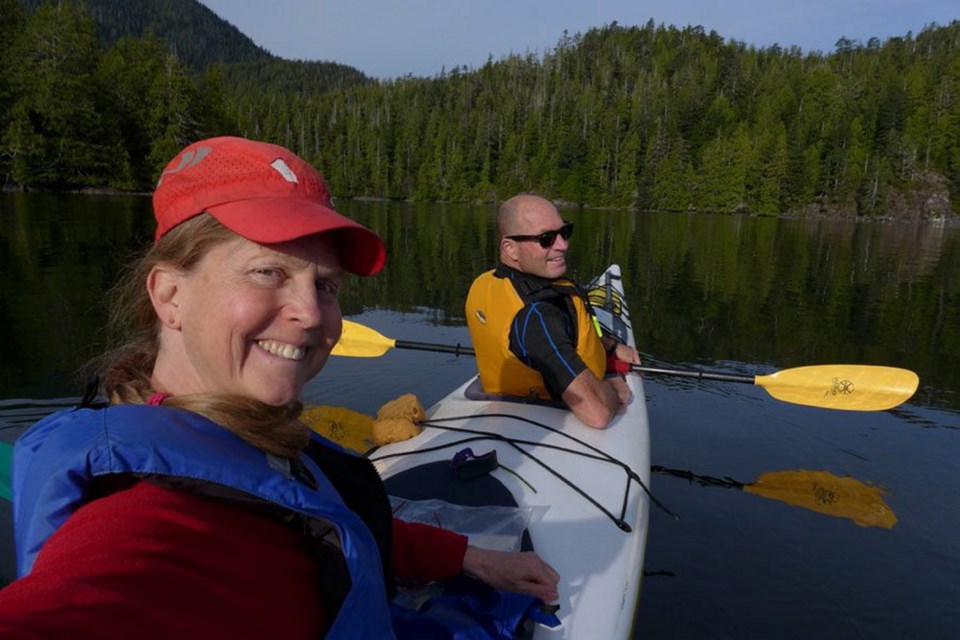 How do you plan for a month in the wilderness? First, get your dental work done. Don’t want to end up with a dethroned crown halfway between the middle of nowhere and the end of the Earth.
How do you plan for a month in the wilderness? First, get your dental work done. Don’t want to end up with a dethroned crown halfway between the middle of nowhere and the end of the Earth.
Also, make sure everything you need goes into the backpack. It’s not like you can pop into 7-Eleven for a lighter if you leave one behind.
“If we forget one crucial thing … we’ll have problems,” says Jacqueline Windh.
That’s the case even when the wilderness is relatively close to home. Many of the back-of-beyond trips that the professional photojournalist/adventurer and her husband, David Gilbert, take are in far-off places — the Himalayas, the Andes, the Kalahari Desert — but this one is right here on Vancouver Island, albeit on one of its remotest reaches.
On Sunday, the pair will take on an all-but-unpopulated stretch of the Island’s west coast that is, to most of us, largely unknown — just like the history of Spanish exploration they intend to highlight.
That’s why they’re calling this the Secret Coast Expedition, a boots-and-kayaks journey that Windh plans to turn into a book that combines the adventure itself with the history of the coast where, more than two centuries ago, four cultures — Spanish, Indigenous, British and Americans — crossed paths. The couple plans to hike the Tatchu Peninsula, Nootka Island and the Hesquiat Peninsula before paddling to Tofino. It’s an endeavour that has the support of both the Royal Canadian Geographic Society, of which Windh is a fellow, and the Spanish Embassy.
The latter is keen to amplify the story of Spain in B.C., where, despite a map dotted with such names as Quadra, Cortes and Galiano, few of us are familiar with the details of their time here. For example, did you know that Port Alberni, where Windh lives, is named after Spanish soldier Don Pedro de Alberni, the first European to grow a vegetable garden in B.C.?
That sounds like one of the more benign forms of colonialism, but, in fact, has its roots (as it were) in a Vancouver Island conflict that changed the course of world history. Alberni planted his frijoles, or whatever, to feed troops shuttled to Nootka Island in 1790 during the Nootka Crisis, when Spain and Britain almost came to war.
The Spanish were the first Europeans to explore this coast, trading with the Nuu-chah-nulth off the Hesquiat Peninsula — but not landing there — in 1774. Four years later, the British landed at Yuquot — or Friendly Cove — on Nootka Island, which soon became a hot spot for British, Spanish, Russian and American traders.
The Nootka Crisis was a tug-of-war over not only who got to colonize that stretch of coast (the Nuu-chah-nulth, in place for thousands of years, didn’t get a vote), but the control of trade and territory in the north Pacific. In the end, Spain, which had claimed sovereignty as far north as Alaska, left the Pacific northwest to the British and the U.S., which had its own aspirations.
Not many signs of those days remain for Windh and Gilbert to see. “I don’t think there’s going to be a lot of artifacts left,” she says.
For those who know what to look for, the foliage offers clues to where Americans built a ship while wintering on Meares Island in 1791. A now-decommissioned Catholic church built at Yuquot in the 1950s includes glass windows, donated by the Spanish government of the day, that depict the Spanish interacting with Indigenous inhabitants in the 18th century.
Windh is keen to look at the past through different lenses, though, including those of Indigenous people whose oral histories have proven accurate, she says. Note that while the resting place of the trading ship Tonquin has long been considered a mystery, an anchor believed to belong to the vessel was pulled up in 2003, right where the Tla-o-qui-aht people said it sank in 1811.
Windh and Gilbert, both in their mid-50s, both ultra-marathoners, are also fired up by the physical challenge of what is to come.
“I just love being out in the wilderness,” Windh says. “I would make a really good hermit.”
They plan to fly by floatplane to Rugged Point Provincial Park, hike five or six days to Port Eliza, then catch a chartered boat to Nootka Island. Then it’s another few days to Friendly Cove, where one of the settlement’s two fulltime residents will pick them up and take them to Hesquiat in his boat. Then come nine or 10 more days on foot before they pick up sea kayaks at Cougar Annie’s Garden and continue on to Tofino, where they hope to arrive July 8.



